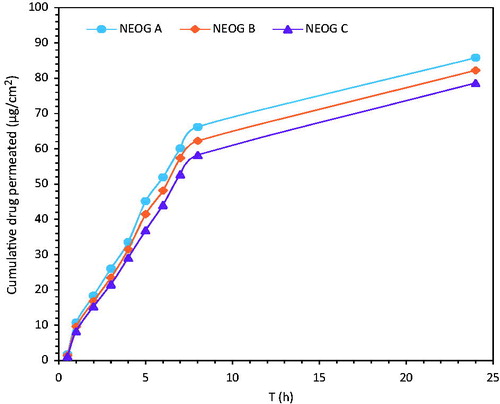Figures & data
Table 1. Composition of various formulations.
Figure 1. Pseudo-ternary phase diagrams indicating w/o nanoemulsion and organogel region at diffierent Smix ratios (A) Kw = 1:1, (B) Kw =1:2 and (C) Kw = 1:3, where Kw = Smix ratio (Span 60/Tween 80).
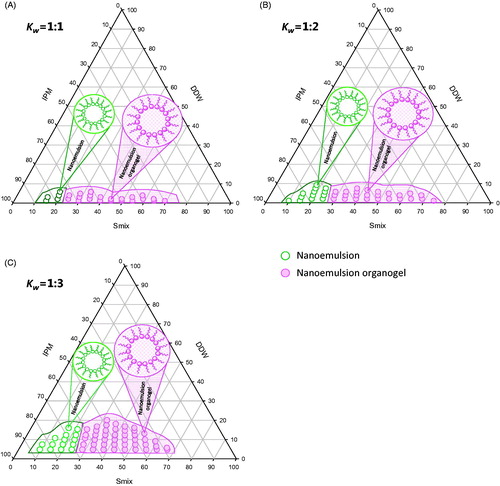
Figure 2. Graph showing variation in turbidity and viscosity as a function of DDW for w/o nanoemulsion at difierent Smix ratios (A) Kw = 1:1, (B) Kw =1:2 and (C) Kw = 1:3, where, Kw = Smix ratio (Span 60/Tween 80).

Figure 3. Temperature dependent loss of elastic modulus, G′ (circles), and viscous modulus, G″ (diamonds), and a curve between Tan δ versus Temperature (triangles), with minima at Tg of (A) NEOG A, (B) NEOG B and (C) NEOG C. The curves are plotted by the best sigmoidal fit of the data points.
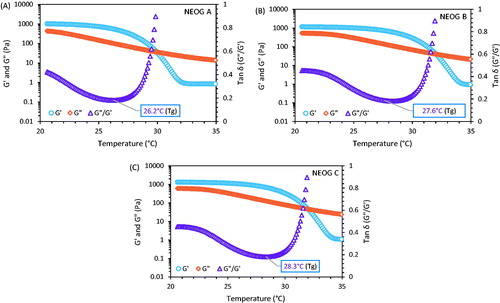
Figure 4. Frequency (ω) dependence of G′ (circles) and G″ (diamonds) in three organogel systems (A) NEOG A, (B) NEOG B and (C) NEOG C. Relaxation exponents were calculated from their slopes.
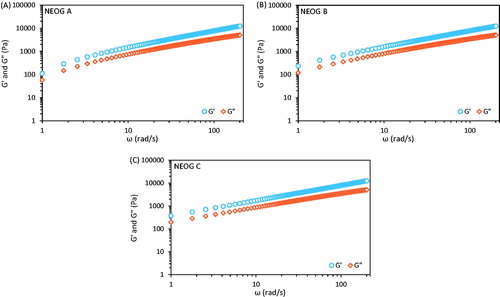
Table 2. Rheological characterization of ACV-loaded NEOG formulations.
Figure 5. Percent drug released versus time curve. The inset shows log (% drug released) versus log T to obtain a power law exponent, which correlates well with direct fitting of the curve to the power law equation.
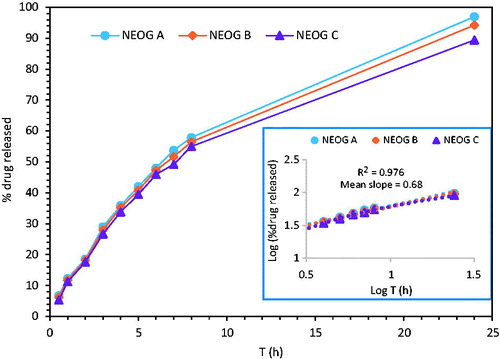
Table 3. In vitro release rate and skin permeation of ACV from various NEOG formulations.

